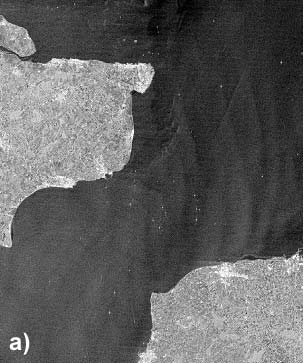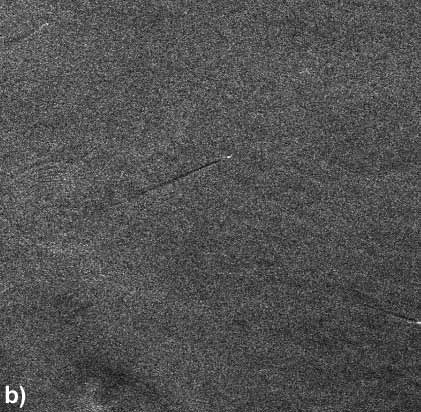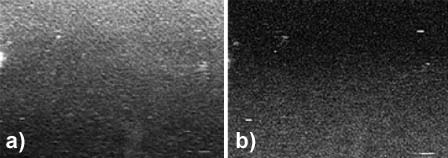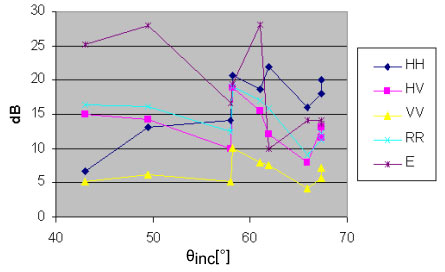Ship Detection
It has been demonstrated that RADARSAT-1 data in combination with an automated target detection system can provide operational detection reliability (up to 95%) using those beams that are best suited to ship detection. Ship detection using SAR relies either on the detection of the ship itself or detection of the ship wake. C band imagery in HH polarization is preferred for detecting the ship because the ship-sea contrast is usually higher for HH polarizations due to the increased scatter at VV by the surface capillary waves. This results in lower background clutter at HH polarization. Conversely VV is preferred for wake detection as the lower backscatter at HH decreases rapidly with increasing incidence angle, resulting in ship wakes rarely being seen in HH polarized images. Figure 9-56 illustrates this using RADARSAT-1 and ERS-1 SAR imagery.


Figure 9-56(a & b). a) RADARSAT-1 C-HH image and b) ERS-1 C-VV image showing enhance ship detection at HH and better wake detection at VV ![]() .
.
Multi-polarization and polarimetric data are expected to allow the user to exploit various polarization combinations to optimize ship detection applications. For example for ship surveillance a VV and VH combination would be optimal as the VH channel provides point target information against a very dark clutter background. At the same time the VV polarization will provide adequate ocean surface backscatter to allow for wake analyses. Since the interaction mechanism between ship and sea is double bounce scattering it is expected that RR, or right-right circular polarization will also be a good polarization for ship signature enhancement.
Polarimetric data are expected to improve ship target detection and possibly classification. However it will only be suitable for ship tracking or perhaps surveillance in certain regions limited in size and strategically or commercially important for ship traffic, due to limited swath coverage. Polarimetric decomposition and classification by scattering mechanism is an exciting application of polarimetric data for ship detection. Polarization entropy is particularly promising, especially for incidence angles less than 60° where ships are only weakly visible in HH polarization images. This is clearly illustrated in HH and Polarization entropy images that show the enhanced ship-sea contrast in Figure 9-57. Since the incidence angles for the RADARSAT-2 sensor are less than 60°, the polarization entropy followed by circular polarization (RR), cross polarization (HV/VH), and HH polarization will provide the best opportunities for ship detection (Figure 9-58).

Figure 9-57. a) C-HH image and b) corresponding polarization entropy image of an area off the coast of Nova Scotia showing improved ship detection using the polarization entropy. Data from C-SAR on Canadian CV-580 ![]()

Figure 9-58. Ship-sea contrast as a function of incidence angle for all linear polarization, RR polarization and polarization entropy (van der Sanden and Ross, [61]). ![]()
Page details
- Date modified: